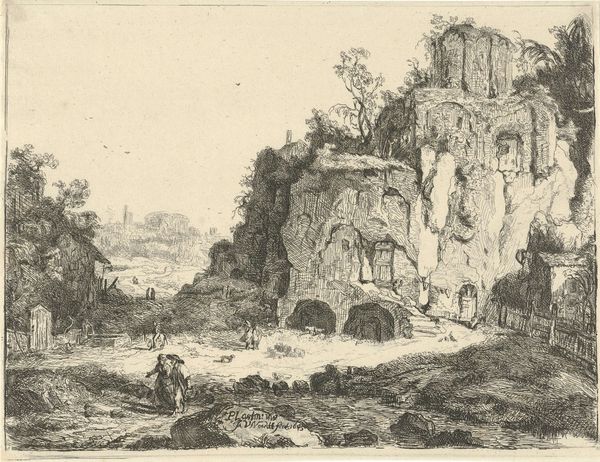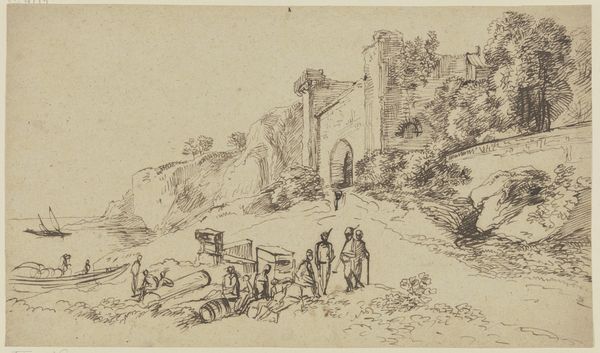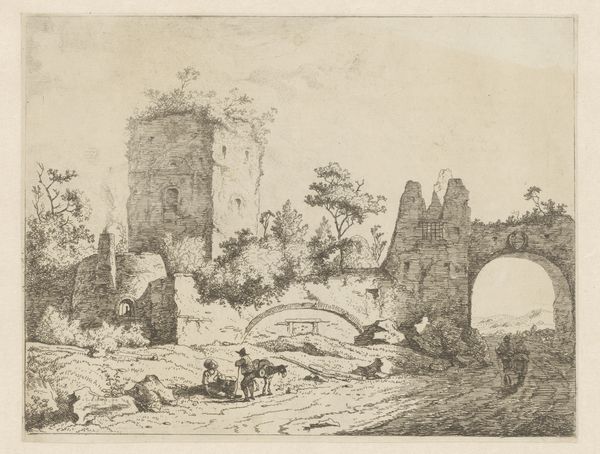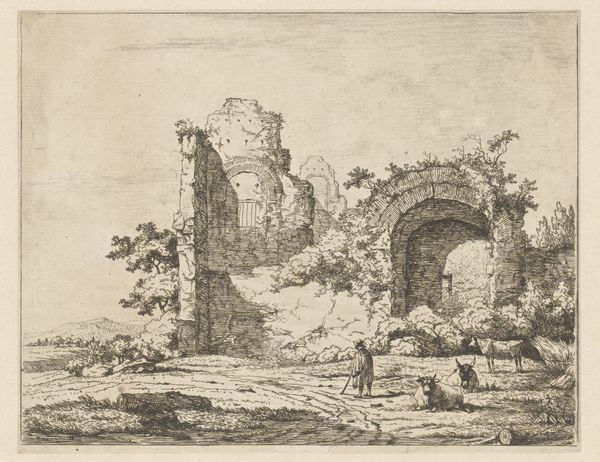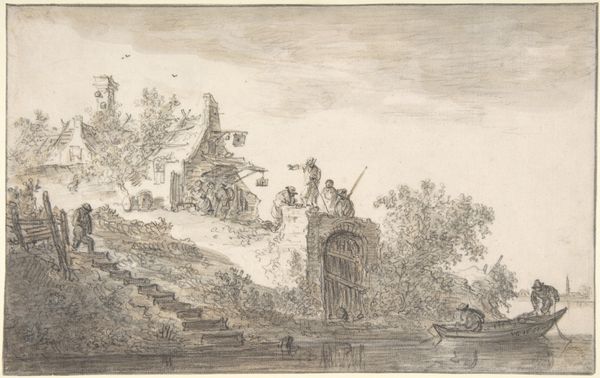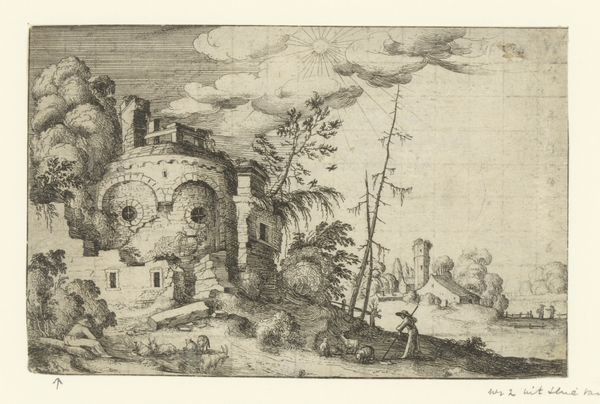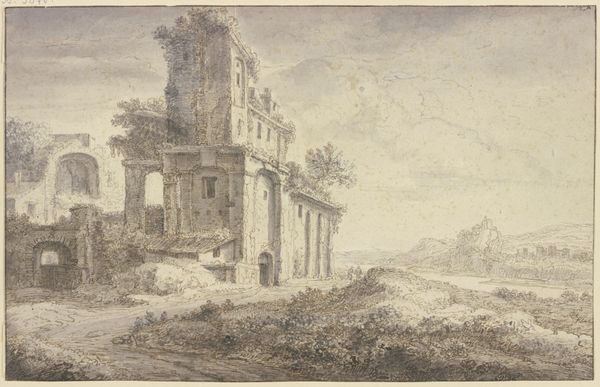
print, etching
#
dutch-golden-age
# print
#
etching
#
landscape
#
figuration
Dimensions: 166 mm (height) x 219 mm (width) (bladmaal)
Curator: Let's consider Jan van Noordt's "Landskab med ruiner," dating back to 1645. This etching is part of the Dutch Golden Age and presents a fascinating ruinous landscape. Editor: My first impression is somber, almost melancholic. The dense lines of the etching, the dilapidated architecture...it speaks of lost grandeur, doesn't it? Curator: Indeed. The crumbling structures raise questions about power and the passage of time, reminding me of the concept of "memento mori"—a reflection on mortality. The ruin symbolizes the transience of human achievement, power structures eroded. It encourages viewers to meditate on temporality through tangible form, inviting analysis of the relationship between humans, power, and inevitable decline from a feminist theoretical framework, where societal imbalances have often dictated what crumbles and for whom. Editor: I'm drawn to the meticulous detailing of the rocks and vegetation. Look at the etching technique— the deliberate marks that create texture and shadow. These choices invite examination into the labor involved, the sheer amount of time to create this rich effect using a copperplate. Considering that it's a print also implies its reproductive capabilities. What are the economics and labor implications here? Was it intended for broader dissemination, allowing people to 'own' a piece of landscape that might have class restrictions for physical access? Curator: Exactly. Beyond mere observation, Van Noordt's choice of ruins offers us a perspective deeply rooted in societal shifts and cultural identity during the Dutch Golden Age. By including ruins, this piece prompts consideration of societal power structures, even implicitly acknowledging class divides regarding access to and appreciation of particular imagery and locales through an etching's dissemination. Editor: And that makes the human presence more poignant, doesn't it? The small figures going about their business amidst these grand ruins – a subtle suggestion about labor in the face of overwhelming history, daily life persisting in the shadows of forgotten achievements? Curator: Precisely, especially since such figures are situated near decaying structures and evoke profound dialogues on social, cultural, and gendered dimensions within seemingly placid environments, provoking consideration of identity construction amidst societal constructs from those periods. Editor: In its focus on decay and the traces of human presence and labor, the artwork challenges us to consider the broader context in which materials circulate and how narratives around power, value, and history are constructed and perpetuated, literally etched into existence. Curator: It’s precisely these conversations around socio-economic and cultural narratives woven within representational forms that cement art’s power in prompting introspection, fostering empathy, and fueling change. Editor: A reminder of how materials, their manipulation, and accessibility intertwine with history and labor, inviting constant reevaluation of our relationship with the past and the power structures embedded within.
Comments
No comments
Be the first to comment and join the conversation on the ultimate creative platform.

